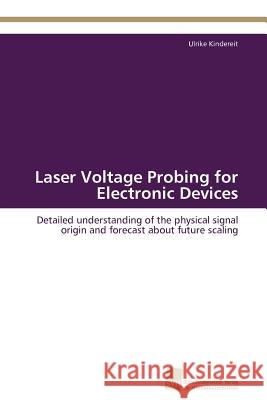Laser Voltage Probing for Electronic Devices » książka
Laser Voltage Probing for Electronic Devices
ISBN-13: 9783838110592 / Angielski / Miękka / 2012 / 176 str.
The ongoing integration density increase changes the demands on failure analysis methods for ICs drastically. "Laser Voltage Probing" (LVP) is an all-optical laser-based technique that acquires waveforms through the silicon backside. Although widely used in failure analysis labs, the knowledge about LVP signal origin is still very low. A detailed investigation of the signal origin is presented, using a modified LVP setup, which employed a 1319 or 1064 nm CW laser. Three new measurement methods were introduced, extracting frequency-information with a spectrum analyzer in opposition to the standard time-domain waveform acquisition with an oscilloscope. Signal-to-voltage correlations and modulation amplitude and sign maps were performed for a broad spectrum of MOSFETs: from 10 um (to study signal sources) to 65 nm gates (effects on structures with decreased dimensions). These low-noise frequency-domain measurement methods enabled very short signal acquisition times (seconds to minutes). A concise model, describing the interaction of laser light and device activity, was built, explaining the signal sources and enabling the forecast of signal levels for future technologies and scaling.
The ongoing integration density increase changes the demands on failure analysis methods for ICs drastically. "Laser Voltage Probing" (LVP) is an all-optical laser-based technique that acquires waveforms through the silicon backside. Although widely used in failure analysis labs, the knowledge about LVP signal origin is still very low. A detailed investigation of the signal origin is presented, using a modified LVP setup, which employed a 1319 or 1064 nm CW laser. Three new measurement methods were introduced, extracting frequency-information with a spectrum analyzer in opposition to the standard time-domain waveform acquisition with an oscilloscope. Signal-to-voltage correlations and modulation amplitude and sign maps were performed for a broad spectrum of MOSFETs: from 10 µm (to study signal sources) to 65 nm gates (effects on structures with decreased dimensions). These low-noise frequency-domain measurement methods enabled very short signal acquisition times (seconds to minutes). A concise model, describing the interaction of laser light and device activity, was built, explaining the signal sources and enabling the forecast of signal levels for future technologies and scaling.











